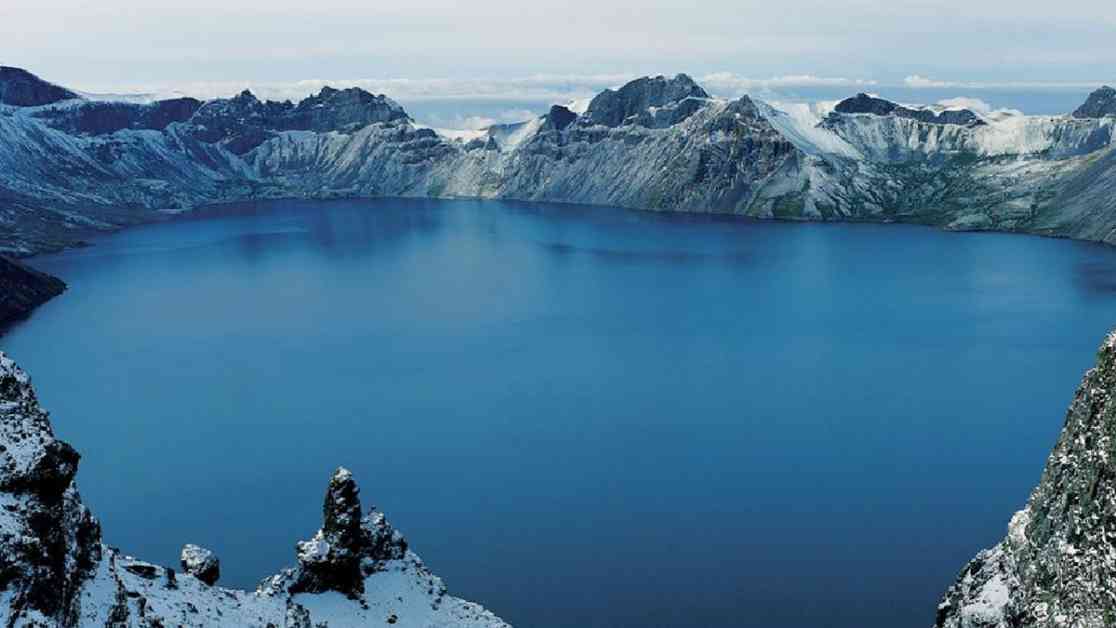Over a thousand years ago, the Changbaishan-Tianchi volcano, located on the border between China and North Korea, unleashed a powerful eruption that led to the creation of Heaven Lake. This volcanic event resulted in a massive flood that inundated the surrounding area with water from the lake at the summit of the volcano.
The eruption, which occurred in 946 CE, expelled a large volume of magma and triggered the catastrophic flood that shaped the landscape around the volcano. Today, evidence of this event can still be seen in the form of boulders and rocks that were carried down from the volcano’s upper regions by the floodwaters.
Researchers, led by Qin et al., have conducted a study to better understand the risks posed by the Changbaishan-Tianchi volcano, also known as Baekdu in Korean. By analyzing the layered deposits left behind by the flood, the researchers estimated that around 1 cubic kilometer of water surged out of the volcano’s caldera, eroding sediment at rates of up to 34 meters per hour over a period of approximately 3 hours.
The study revealed that the eruption consisted of two phases, with the catastrophic flood occurring between these phases. Contrary to previous hypotheses suggesting a single instantaneous outburst of water, the researchers proposed three alternative scenarios for the flood’s occurrence. These scenarios include water overflowing the caldera’s edge due to rising magma, an earthquake causing the collapse of the caldera’s inner wall into the lake, or precipitation filling the caldera before weakening the crater rim and allowing the water to escape.
By studying ancient floods like the one triggered by the 946 CE eruption, scientists hope to improve preparedness for future natural disasters not only at Changbaishan-Tianchi but also at other volcanoes worldwide. Understanding the mechanisms behind past volcanic events can help vulnerable populations mitigate the impacts of similar disasters in the future.
This research, originally published on Eos.org, sheds light on the geological history of the Changbaishan-Tianchi volcano and highlights the importance of studying ancient natural disasters to enhance disaster resilience globally. Subscribe to receive more fascinating discoveries and scientific insights directly to your inbox.










